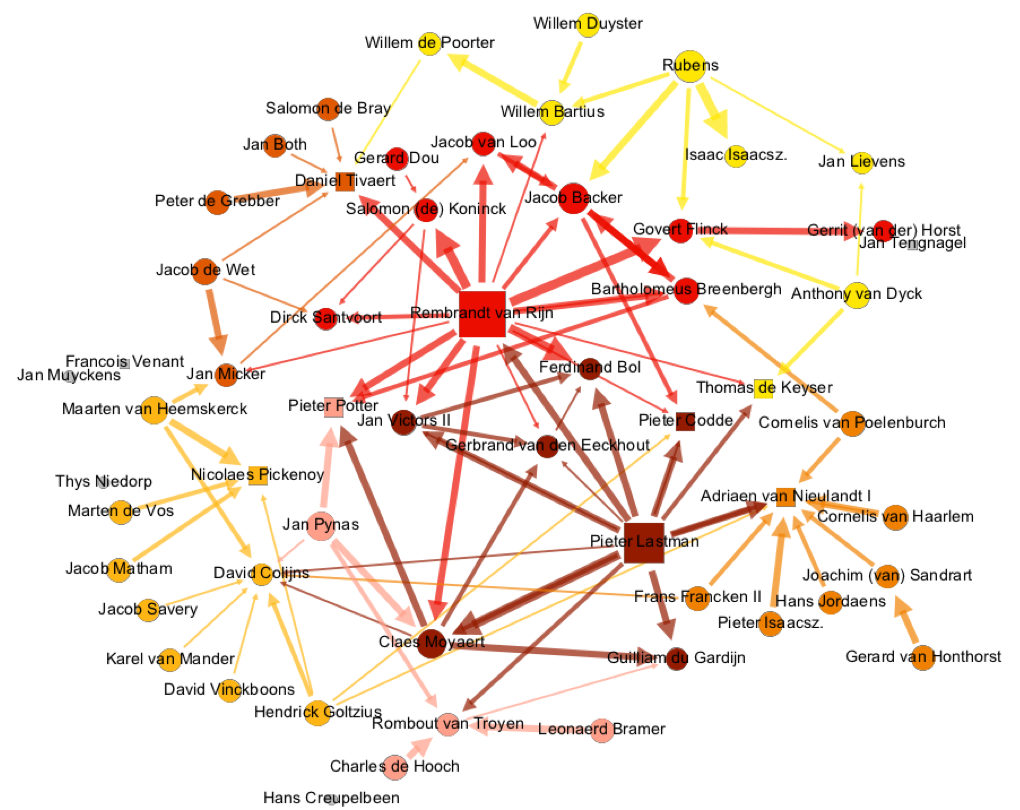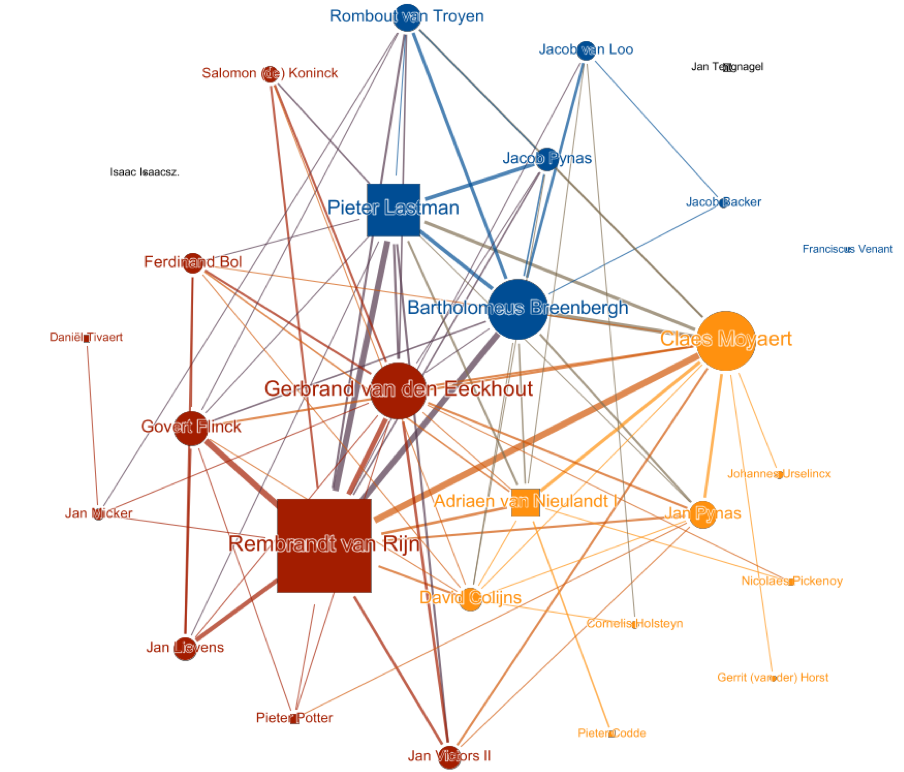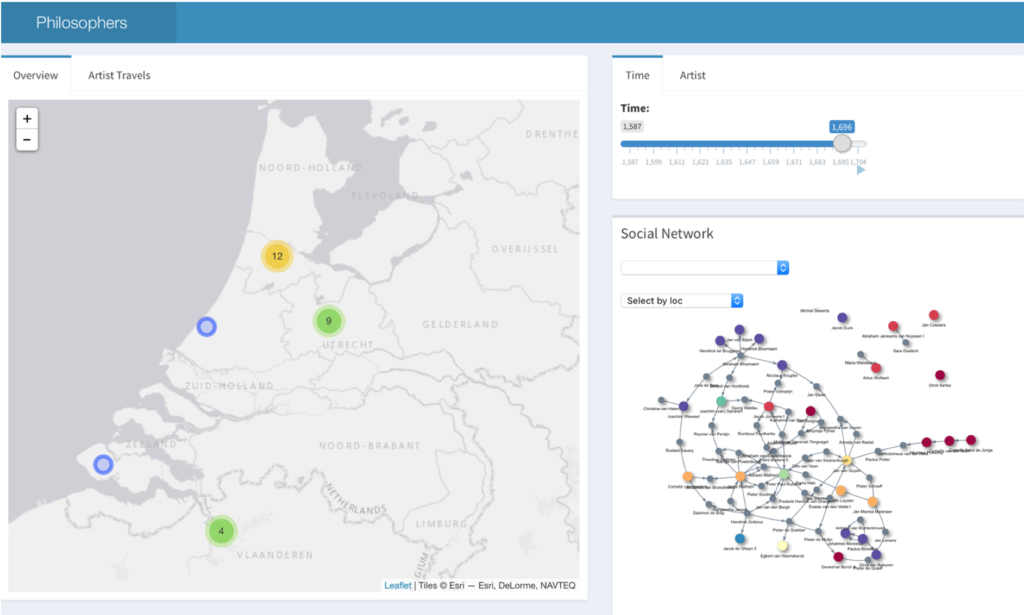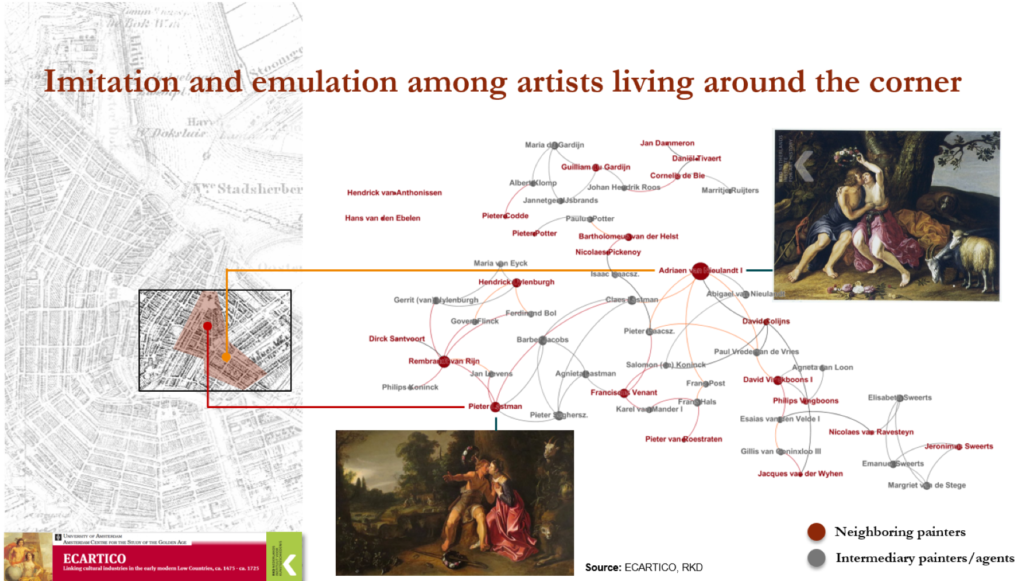Deciphering the transmission of ideas among artists living around the corner
Weixuan Li
Historical and cadastral maps can enrich art historical research by allowing to pinpoint the artist’s workshop to a specific location in the city. Cadastral resources, together with historical maps and archival sources, enable us to virtually reconstruct the spatial networks in neighborhoods where artists lived, worked, and socialized.

However, the dissemination of artistic innovation through physical contact within the same community has long escaped the art historian’s attention. This research intends to fill this gap through deep-mapping the production and consumption of painting in seventeenth-century Amsterdam, with a focus on Rembrandt’s neighborhood, Sint Antoniesbreestraat. Information extracted from archival documents are layered on top of the historical maps of 1625 and 1724 by georeferencing the descriptions of locations from the original sources.

Wealth distribution in the city based on the 1631 tax registration are visualized, which refutes the commonly-held belief that Sint Antoniesbreestraat was crowded with wealthy patrons of arts, who attracted artists to this neighborhood. This research further links the biographical databases of agents in the creative industries in Amsterdam and analyzes the composition of the neighborhood of Sint Antoniesbreestraat, which illustrates that this area continued to flourish throughout Rembrandt’s lifetime.
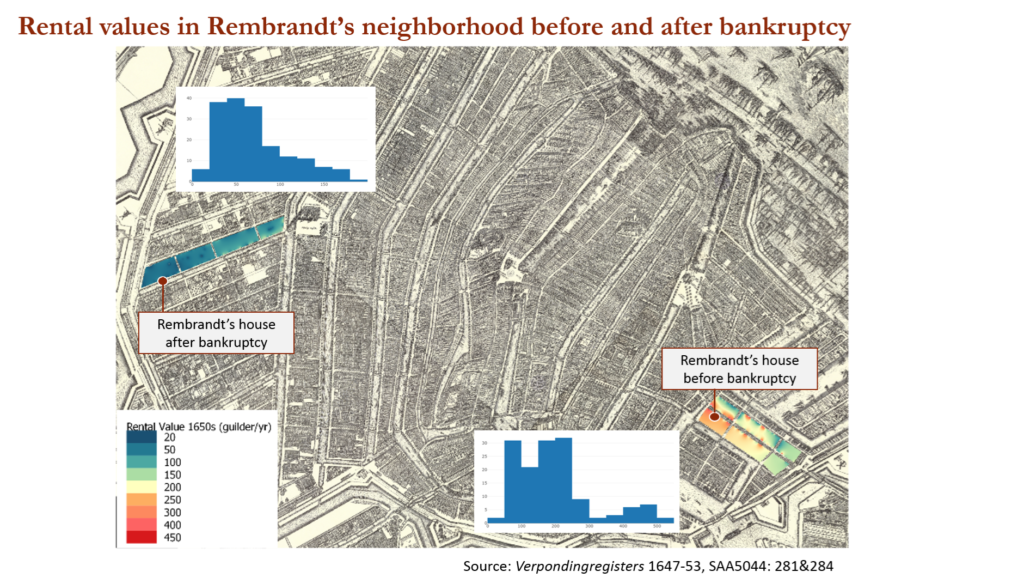
A closer observation of the functioning and evolution of creative industries in a spatial cluster reveals that, as the art market matured, Rembrandt’s neighborhood experienced a ‘reverse gentrification’ — artistic painters were replaced by the ‘industrial’ painters who painted on spec or participated in mass production.

Lastly, by layering paintings created in Sint Antoniesbreestraat onto the map, it shows that, for the transmission of artistic knowledge, physical proximity worked in a similar way as social relation because both provided access to each other’s work and collections for inspiration. Therefore, spatial clustering and the social network of artists will need to be translated into measures of accessibility to reveal the transmission of artistic innovation.


